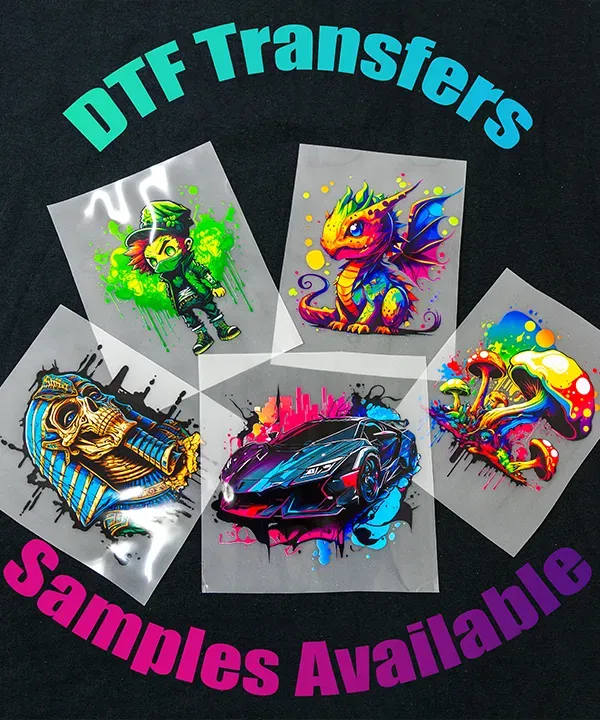DTF transfers, or Direct to Film transfers, represent a groundbreaking advancement in the printing landscape. This innovative printing process enables high-quality designs to be applied to a variety of fabrics, from cotton to blends, making it a favorite choice for custom apparel and promotional items. By utilizing water-based inks, the DTF printing process ensures vibrant colors and sharp details, leading to exceptional final products. With numerous benefits like durability and versatility, DTF transfers offer a compelling alternative to traditional methods such as screen printing. In this introduction, we will explore how this technology works and the many advantages it brings to the world of custom design.
Direct to Film (DTF) printing has emerged as a transformative method in the textiles sector, altering how designs are brought from concept to fabric. Leveraging modern technologies, this process involves applying vivid prints onto a special film before transferring them onto various garments. With its compatibility across different material types and its ability to deliver stunning, long-lasting results, DTF printing stands out from conventional options like screen printing. Custom apparel produced through DTF transfers caters to an expanding market of personalized products, showcasing the method’s relevance in today’s on-demand economy. In this article, we will delve deeper into the mechanics behind DTF technology and its considerable benefits for businesses and creative professionals alike.
Understanding DTF Transfer Technology
DTF transfer technology represents a significant breakthrough in the printing field, incorporating advanced methods to create stunning designs on fabric. This innovative process utilizes water-based inks that are printed on a PET film, followed by a series of carefully orchestrated steps to ensure the transfer quality. Each design begins with a meticulously prepared digital artwork, ensuring the correct resolution and color profiles are maintained to leverage the full potential of DTF printing.
After the design is printed onto the film, a heat-sensitive adhesive powder is applied, which cures under heat, solidifying the bond between the ink and adhesive. This critical phase not only prepares the design for application on various textiles but also enhances durability upon transfer. The final step involves a heat press, which ensures the design becomes permanently affixed to the fabric, minimalizing any risk of peeling or fading.
Frequently Asked Questions
What is the DTF printing process and how does it work?
The DTF printing process, or Direct to Film printing, involves printing designs onto a special PET film using water-based inks. The printed film is then coated with a heat-sensitive adhesive powder, cured, and finally transferred to the desired fabric using a heat press. This method allows for high-quality, vibrant designs that adhere well to a variety of materials.
What are the benefits of DTF transfers compared to other printing methods?
DTF transfers offer numerous benefits, including high-quality output with vibrant colors, compatibility with various fabric types, and ease of production for small to medium print runs. Unlike screen printing, DTF printing is less labor-intensive and provides consistent results even after multiple washes.
How do DTF transfers compare to screen printing?
When comparing DTF transfers to screen printing, DTF offers greater flexibility in fabric compatibility, allowing for printing on cotton, blends, and synthetics. DTF is also easier and faster for small print runs, while screen printing may be more cost-effective for large volumes but requires more setup time.
Can DTF printing be used for custom apparel designs?
Yes, DTF printing is an excellent choice for custom apparel designs. It allows for intricate artwork to be transferred onto garments, ensuring vibrant, long-lasting results. This method is increasingly popular among businesses and individuals looking to create personalized clothing.
What types of materials can DTF transfers be applied to?
DTF transfers can be applied to a wide range of materials including cotton, polyester, blends, and various synthetics. This broad compatibility makes DTF printing a versatile option for custom apparel and promotional items.
What recent advancements are being made in DTF printing technology?
Recent advancements in DTF printing technology include improved printer designs offering faster speeds and higher resolutions, along with innovative, environmentally friendly ink formulations. These enhancements are helping to meet the increasing demand for custom products while minimizing environmental impact.
| Key Points | Details |
|---|---|
| What is DTF Transfer Technology? | A modern printing method that uses water-based inks to print designs on PET film for applying to fabrics. |
| Key Stages in DTF Printing | 1. Design Creation 2. Film Transfer 3. Adhesive Coating 4. Final Transfer |
| Benefits of DTF Transfers | High-quality output, wide fabric compatibility, ease of production. Ideal for intricate designs and various fabric types. |
| Recent Developments | Improved printer designs, innovative ink formulations, and increasing market trends favoring custom apparel. |
| Applications of DTF Transfers | Fashion, promotional merchandise, and custom gifts. |
Summary
DTF Transfers represent a groundbreaking advancement in printing technology, allowing for high-quality, versatile applications in the textile industry. This innovative process enables intricate designs to be efficiently printed on various fabrics, catering to diverse market needs—from fashion apparel to promotional items. With a focus on environmentally friendly practices and ongoing technological improvements, the future of DTF Transfers looks promising, making them an essential tool for businesses seeking to provide customized products.

